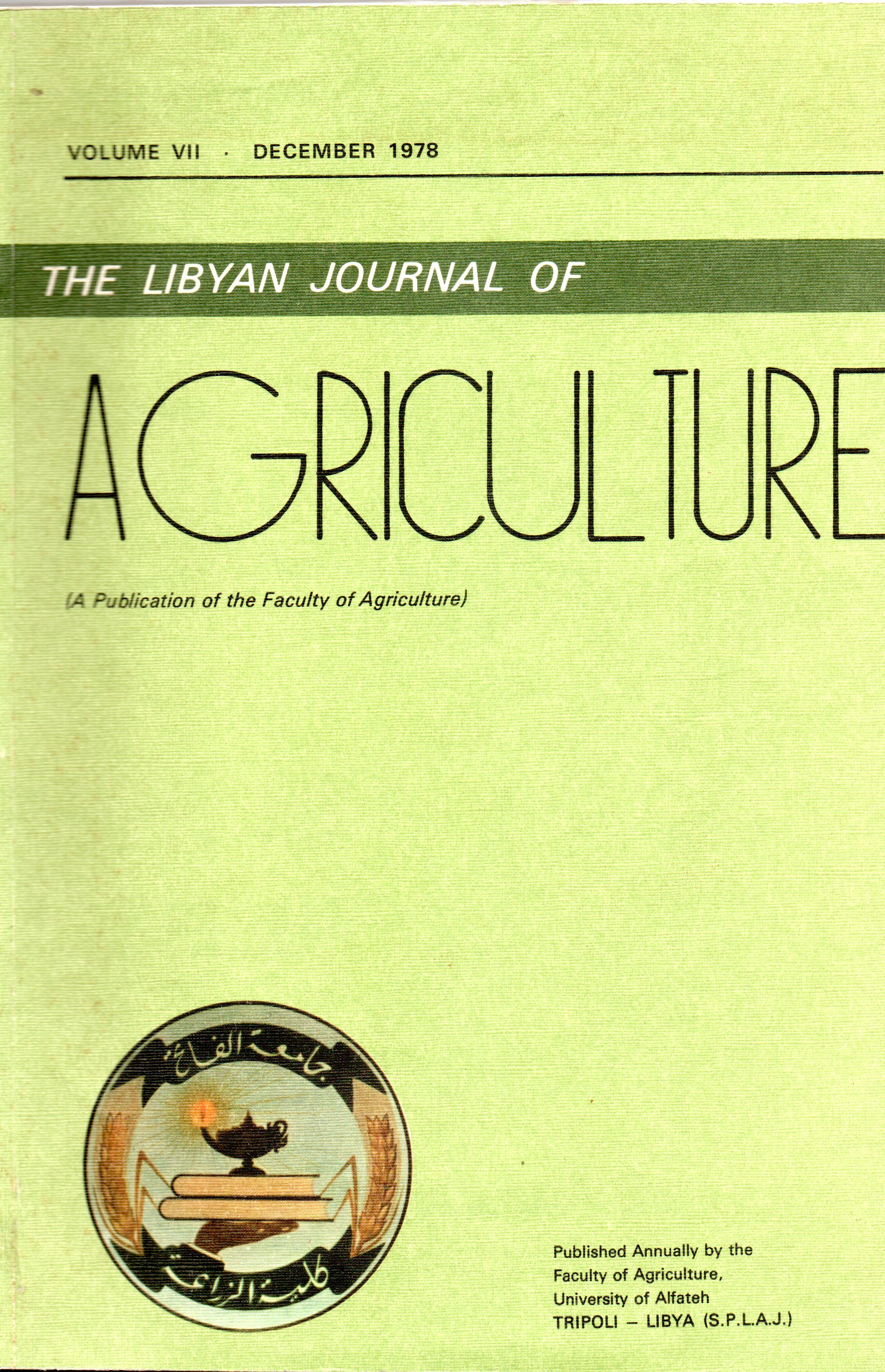The Effect of Tillage and Nitrogen Fertilization on Yield and Yield Components of Wheat
Main Article Content
Abstract
The effect of tillage depth by different implements in seed-bed preparation under four nitrogen fertilization rates on yield and yield components of wheat, cultivar Sidi Mesri 1 (Triticum aestivum L.) was studied in a field experiment at Tripoli, Libya. Tillage treatment as compared to no-tillage had higher plant density and late heading, greater root depth, dry root and shoot weight at 4 weeks, plant height, number of spikes per plant, spikes per m2 and number and weight of grains per spike. The subsoiling (50 cm deep) gave higher values for nearly all the above characters as compared to rotovation (15 cm deep) and disking (25 cm deep). There was no difference between 15 and 25 cm tillage depths for days to heading, plant height, number of spikes per plant, spikes per m2, number of grains and weight of grains per spike. Nitrogen fertilization had the positive effect over control treatment for observations made after fertilization. The effect of 100 kg N/ha was comparable to 150 kg N/ha. Nitrogen effects for biological yield were noticed in shallow or deep tillage and not on intermediate depth. Except in the no-tillage treatment, increase in nitrogen fertilization increased dry root and shoot weight at 17 weeks, yield of grain and 1000-grains weight. Deep tillage, at least irregularly, seems to be necessary along with nitrogen even in loose sandy soils for proper growth of wheat in the coastal areas of Libya.

